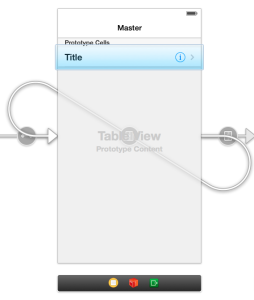In my iOS class @FHNW I set the students a task for creating a CRUD application. The backend is an existing .net REST WebService with JSON. Unfourtanatly Microsoft has decided to create their own date formate instead of using a standard like RFC1123. Therefore the solution to display the date correctly or parsing an NSDate is not strait forward.
You can parse the date the the following snipped:
+ (NSDate *)mfDateFromDotNetJSONString:(NSString *)string {
static NSRegularExpression *dateRegEx = nil;
static dispatch_once_t onceToken;
dispatch_once(&onceToken, ^{
dateRegEx = [[NSRegularExpression alloc] initWithPattern:@"^\\/date\\((-?\\d++)(?:([+-])(\\d{2})(\\d{2}))?\\)\\/$" options:NSRegularExpressionCaseInsensitive error:nil];
});
NSTextCheckingResult *regexResult = [dateRegEx firstMatchInString:string options:0 range:NSMakeRange(0, [string length])];
if (regexResult) {
// milliseconds
NSTimeInterval seconds = [[string substringWithRange:[regexResult rangeAtIndex:1]] doubleValue] / 1000.0;
// timezone offset
if ([regexResult rangeAtIndex:2].location != NSNotFound) {
NSString *sign = [string substringWithRange:[regexResult rangeAtIndex:2]];
// hours
seconds += [[NSString stringWithFormat:@"%@%@", sign, [string substringWithRange:[regexResult rangeAtIndex:3]]] doubleValue] * 60.0 * 60.0;
// minutes
seconds += [[NSString stringWithFormat:@"%@%@", sign, [string substringWithRange:[regexResult rangeAtIndex:4]]] doubleValue] * 60.0;
}
return [NSDate dateWithTimeIntervalSince1970:seconds];
}
return nil;
}
This solution is copied from stack overflow.
To produce a .net WebService compatible date string again the solution is a little bit simpler. The important parts are caring about second/millisecond base and the time zones:
+ (NSString*)dotNetJSONStringFromDate:(NSDate*)date
{
NSDateFormatter* formatter = [[NSDateFormatter alloc] init];
[formatter setDateFormat:@"ZZZ"];
NSString* timezone = [formatter stringFromDate:date];
int timezoneOffset = [timezone intValue] * 36;
NSTimeInterval timeInterval = [date timeIntervalSince1970];
unsigned long long time=((timeInterval - timezoneOffset) * 1000);
NSString* dateTimeTosend= [NSString stringWithFormat:@"/Date(%lld%@)/", time, timezone];
return dateTimeTosend;
}

